Key takeaways:
- Songwriting awards recognize creativity and foster collaboration, highlighting the importance of diverse genres in music.
- Interactive music experiences enhance audience engagement and community, allowing fans to participate creatively.
- Feedback and understanding audience preferences shape better content creation and foster loyalty among listeners.
- Resilience, collaboration, and vulnerability are crucial lessons learned in the journey of songwriting and creativity.
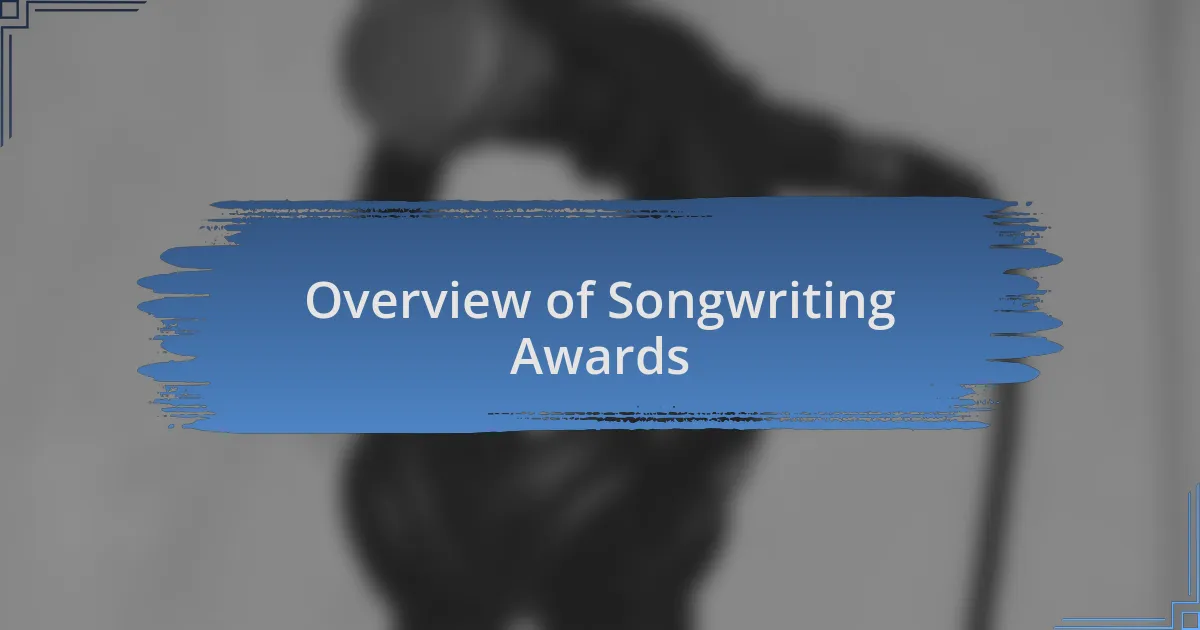
Overview of Songwriting Awards
Songwriting awards play a pivotal role in recognizing the creativity and talent behind the music we love. I remember the first time I attended a songwriting award ceremony; the atmosphere buzzed with excitement and passion. It was inspiring to see how recognition could propel artists to new heights in their careers.
These awards not only celebrate individual achievements but also highlight the collaborative spirit of songwriting. The joy of working together to craft a song can be so profound—what if your next collaboration led to an award-winning piece? It puts everything into perspective, doesn’t it?
Many prestigious awards focus on various genres, showcasing the diversity within the songwriting community. I’ve often wondered how many incredible songs go unrecognized simply because they don’t fit into mainstream categories. Each genre tells a different story, and that storytelling deserves to be celebrated across all platforms.
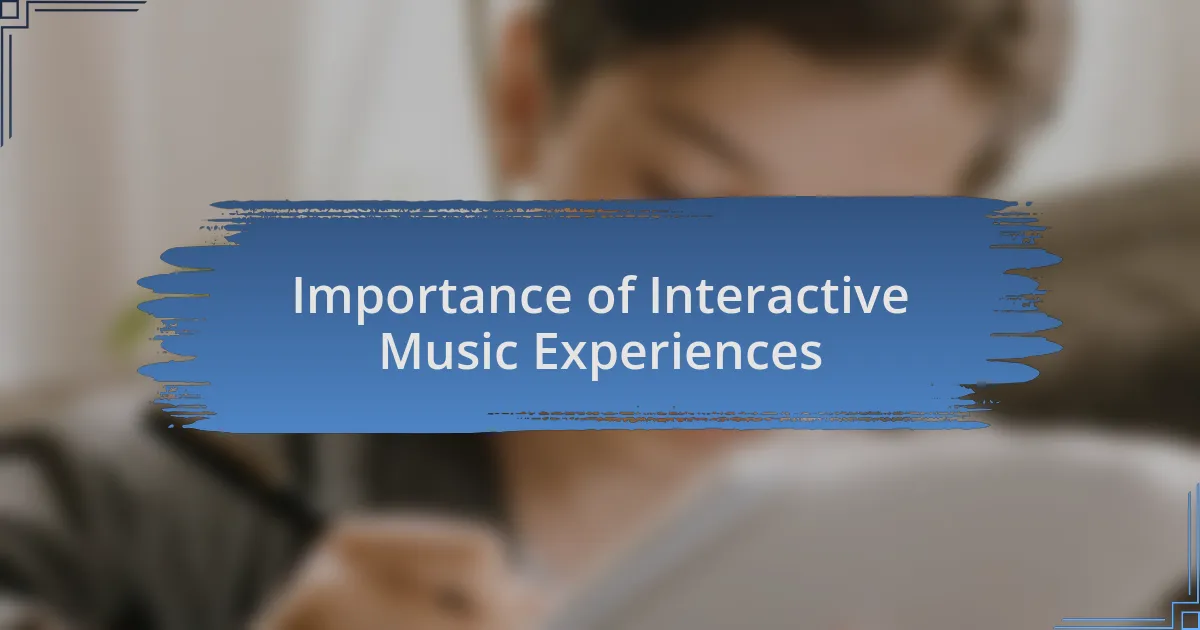
Importance of Interactive Music Experiences
Creating interactive music experiences is crucial in the current landscape of digital engagement. I recall experimenting with an interactive platform that allowed users to choose different song elements, tailoring the experience to their liking. It was eye-opening to realize how this level of personalization could create a deeper emotional connection with the music.
These experiences also foster community and collaboration among listeners. When fans can remix or reinterpret a song, they feel like they are part of the artistic process. I often think back to the times when local artists organized jam sessions, enabling the audience to mingle and even contribute lyrics. It’s incredible how such interactions can inspire newfound creativity in both fans and musicians alike.
Moreover, interactive elements can enhance learning and appreciation of music. I remember participating in a workshop where attendees could dissect songs and even create their own variations. This hands-on approach not only made the music more approachable but also helped me understand the intricacies of songwriting. Engaging with music in this way is not just fun; it genuinely elevates our appreciation for the craft behind it.

Understanding Audience Engagement
Understanding Audience Engagement is about more than just metrics; it’s about tapping into the emotions and passions of the listeners. When I first hosted an online event where fans could vote on elements of a live composition, I was amazed by the level of enthusiasm it ignited. It made me wonder: how often do we consider audience feedback as a driving force in our art?
In an intimate setting, I once invited fans to share their stories related to a song I was performing. The conversations that blossomed around those shared experiences were profound. It highlighted for me how connecting on a personal level can transform mere listeners into invested participants, fostering a sense of belonging and ownership in the music’s journey.
I’ve also found that understanding audience preferences can lead to better content creation. By analyzing which interactive features received the most engagement, I tailored future projects to resonate more with listeners. Isn’t it fascinating how a little insight into what our audience values can shape the music we share and ultimately enrich the entire experience for everyone involved?
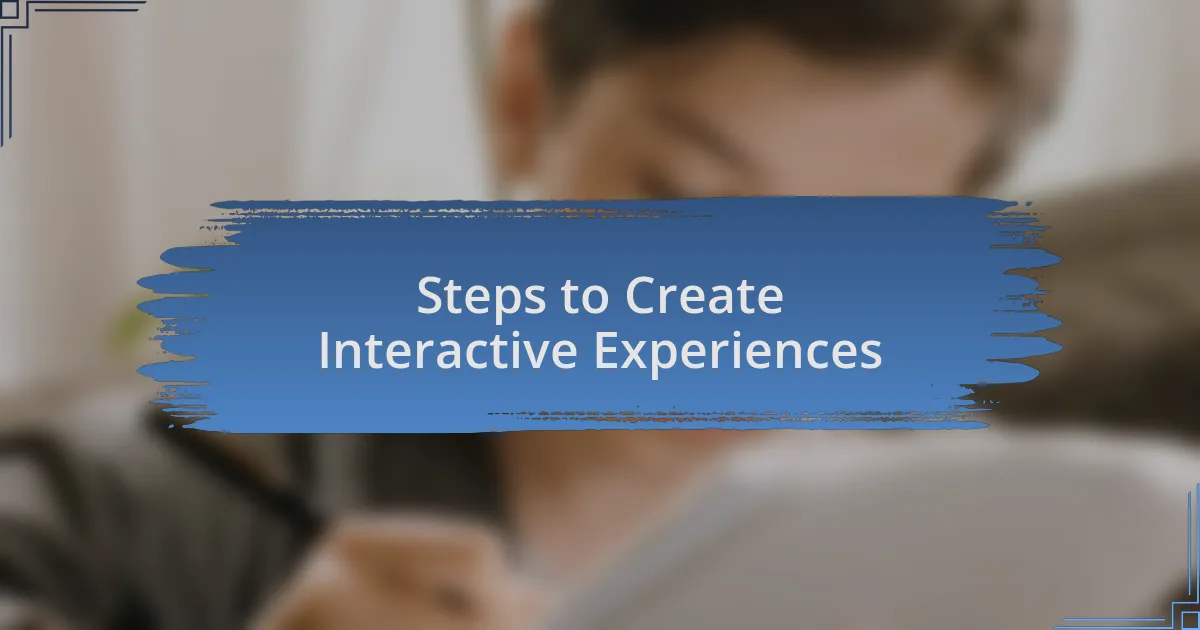
Steps to Create Interactive Experiences
To create interactive experiences, the first step is to truly grasp your audience’s interests. I remember when I decided to launch a community poll to choose the theme of my next album. Watching fans engage and share their thoughts was eye-opening. It sparked a genuine excitement and made them feel like they were part of the creative process. Have you ever wondered how much more meaningful a project could become when your audience has a hand in shaping it?
Next, consider incorporating various multimedia elements into your experience. For instance, I recently utilized video snippets and behind-the-scenes footage in a livestream performance. It not only provided richer content but also allowed fans to see the creative process in action. Isn’t it enlightening how a visual element can deepen the listener’s understanding and appreciation of the music?
Lastly, feedback should be integral to your interactive experience. After each event, I’ve taken time to gather responses, eager to learn what resonated most with my audience. This ongoing dialogue not only enhances future interactions but also cultivates a loyal community. Isn’t it incredible how listening to your audience can amplify the shared experience and foster lasting connections?
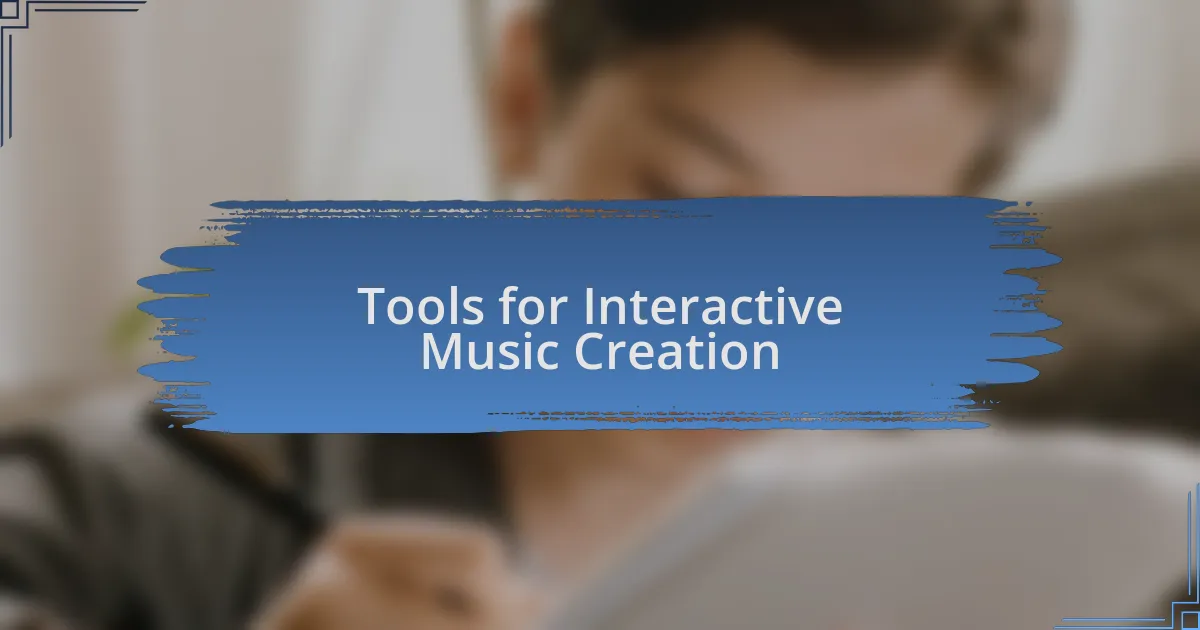
Tools for Interactive Music Creation
When it comes to tools for interactive music creation, I’ve found that software like Ableton Live and Logic Pro X is incredibly versatile. These platforms allow for real-time collaboration, which I experienced firsthand during a recent project with a fellow songwriter. We shared a session online, and I was blown away by how our ideas flowed seamlessly as we tweaked the arrangement together. Have you ever felt that rush of creativity when bouncing ideas off someone in real time?
Another invaluable resource is platforms like BandLab and Soundtrap, which focus on cloud-based music production. I remember working on a track with a friend who was thousands of miles away. We both opened our apps, and it felt like we were in the same room, exchanging ideas and mixing elements. Isn’t it fascinating how technology can bridge distances and create a shared musical space, making collaboration so accessible?
Finally, don’t underestimate the power of interactive visuals. I often use tools like Adobe Spark or Canva to create engaging graphics that accompany my music. Last year, I designed a promo video for my latest single that included animated lyrics and dynamic images. This added layer sparked a deeper emotional connection with my audience. Have you thought about how visuals can transform the way listeners experience your music?
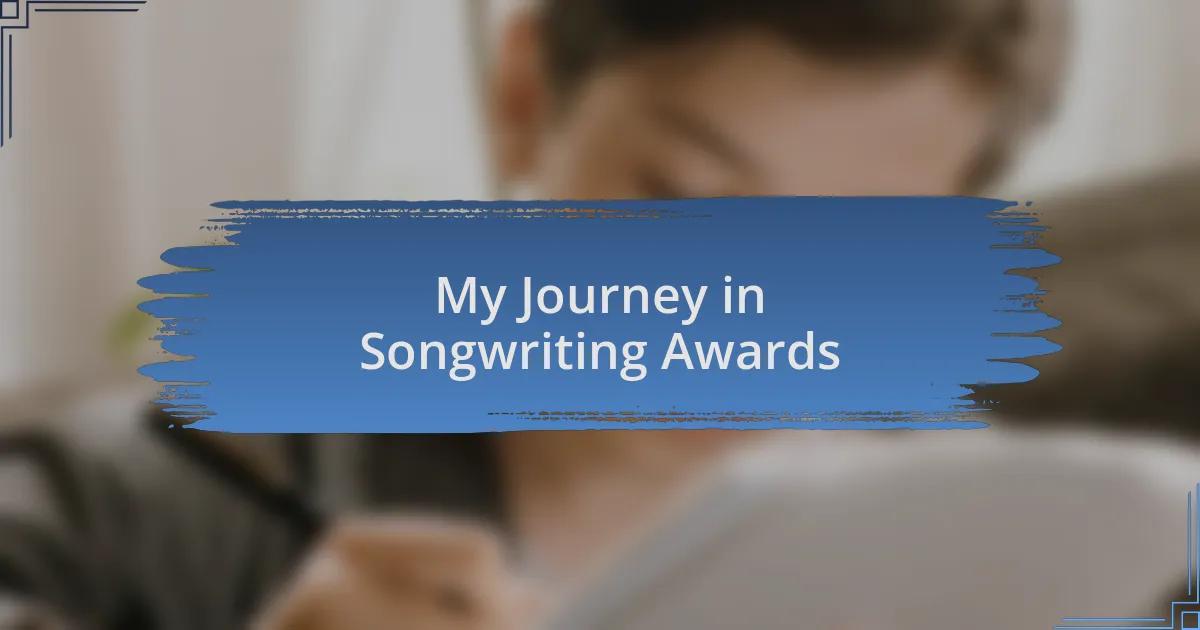
My Journey in Songwriting Awards
The journey through songwriting awards has shaped my creative path in profound ways. I recall the first time I submitted a song—my heart raced as I hit the send button. It was a blend of excitement and fear; what if they didn’t feel my passion? That initial rejection felt like a door closing, but it only fueled my determination to improve my craft.
As I navigated various competitions, I discovered the true value of feedback. One memorable instance was when a judge offered insights that shifted my perspective on my lyrics. Instead of viewing my work as a finished product, I began seeing it as an evolving conversation with my audience. Isn’t it amazing how constructive criticism can lead to breakthroughs in creativity?
Winning my first award felt surreal and affirming. It was more than just recognition; it reassured me that my voice had a place in the music world. In that moment, I realized that each song I penned carried my experiences and emotions, serving as a bridge to connect with others. Have you ever felt that your story resonates just by sharing it through music?

Lessons Learned from My Experience
The first lesson I learned was the importance of resilience. I remember sitting in my living room after yet another rejection, staring at my guitar, contemplating whether this journey was worth it. In that moment, I realized that every setback is just a stepping stone to growth. How often do we allow rejection to define us?
Another key insight was the significance of collaboration. In one competition, I teamed up with a fellow songwriter who had a different musical style. Combining our talents not only enriched our song but also expanded my understanding of songwriting dynamics. Have you ever collaborated with someone and discovered a side of your creativity you didn’t know existed?
Finally, I learned that vulnerability is a strength, not a weakness. When I shared deeply personal lyrics that unfolded my journey, I was surprised by the connection it fostered with listeners. This revelation taught me that exposing my true self invites others to relate and share their own stories. Isn’t it interesting how music can create such a powerful bond among strangers?